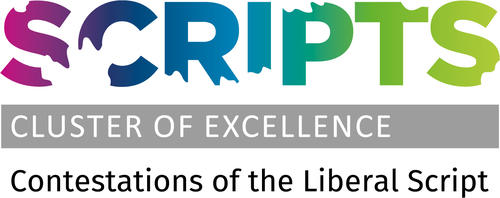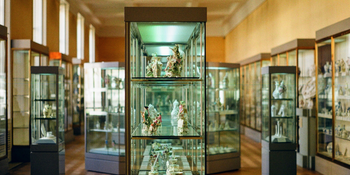Objects from Afar and Sustainable Liberal Identity - The Contestation of Material Representation in National Museums of the Global North
Objects from afar
Image Credit: Lewis Westwood Flood / Unsplash
Museums are places in which artefacts or artworks are publicly exhibited. Museums constitute a specific “scene.” Objects play the role of “actors” and interpret specific “plots.” Visitors are guided by a “script” that deliberately captures and directs their attention into pre-determined pathways. These can be esthetical, cultural, historical, but above all – political.
Whereas objects in national history museums give a material interpretation of a nation’s identity, museums in the Global North that exhibit artefacts from “around the world” i.e. “from afar” – e.g. museums of ethnography or antiquity - allow to construct how a nation looks upon or perceives “the other(s)” and how it defines its own place in the world.
This project is concerned with this latter type of museum. It is based on the hypothesis that Western liberal-democratic countries currently use “objects from afar” to deliberately forge a sustainable (i.e. future-oriented) and thus “modern” view of themselves vis-à-vis the “others.” They try to replace historic patterns of felt cultural superiority by an image of mutual global respect and cultural sensitivity. The Paris Musée du Quai Branly and the Berlin Humboldt Forum are two examples.
One could argue that these museums are deliberate instruments of (cultural) diplomacy and international relations. Through the exhibition of objects “from others”, both France and Germany show how they wish to be perceived “by others.” They are used to promote how Western-liberal democracies should be viewed in the world and by the world. Yet, as the example of the Humboldt-Forum in Berlin shows, attempts of representing a modern, liberal and post-colonial national image through “objects from afar” are fiercely contested. The discussions evolving around museums, their exhibits and exhibitions constitute an important part of ongoing societal quarrels about the general picture that a (liberal) society has and should have of itself – and how this image is to be materially represented. This includes debates on identity, on how the (colonial) past is interpreted as well as calls for provenance identification and restitution. It even includes new waves of iconoclasm or calls for “cancelling”. Other than accepting the role of passive spectators, the public has transformed into an active critic and participating co-creator in the process of representing national identity through objects. And it includes actors and voices from the Global South – and criticism from those who claim to be the true owners of the artefacts and objects exhibited. This project links the contemporary debates on national identity to questions of material representation through “objects from afar”. It also integrates distinctive non-Western perspectives in order to find out, whether and how these debates constitute a specific contestation to the liberal script.
The project will tackle the following questions:
1. In which way do public debates on the display of specific objects “from afar” inform, shape, mirror, transform and influence wider discussions and debates on a liberal-democratic nation’s history, current and future identity and its role in the world.
2. How does this discursive dynamic with its network of specific national and transnational actors and institutions constitute a general contestation of the liberal script?
The methodological focus of the project will be on materiality (“objects”) and it is envisaged that national case studies of the liberal-democratic Global North (be it Germany, France or Great Britain) will be combined with different continental perspectives and voices from “the other side” where many of the objects originate (e.g., Senegal and Mexico).
The overall project is a collaborative effort between various Principal Investigators of the SCRIPTS Research Units Temporality, (Re-)Allocation and Borders as well as with other partners.

